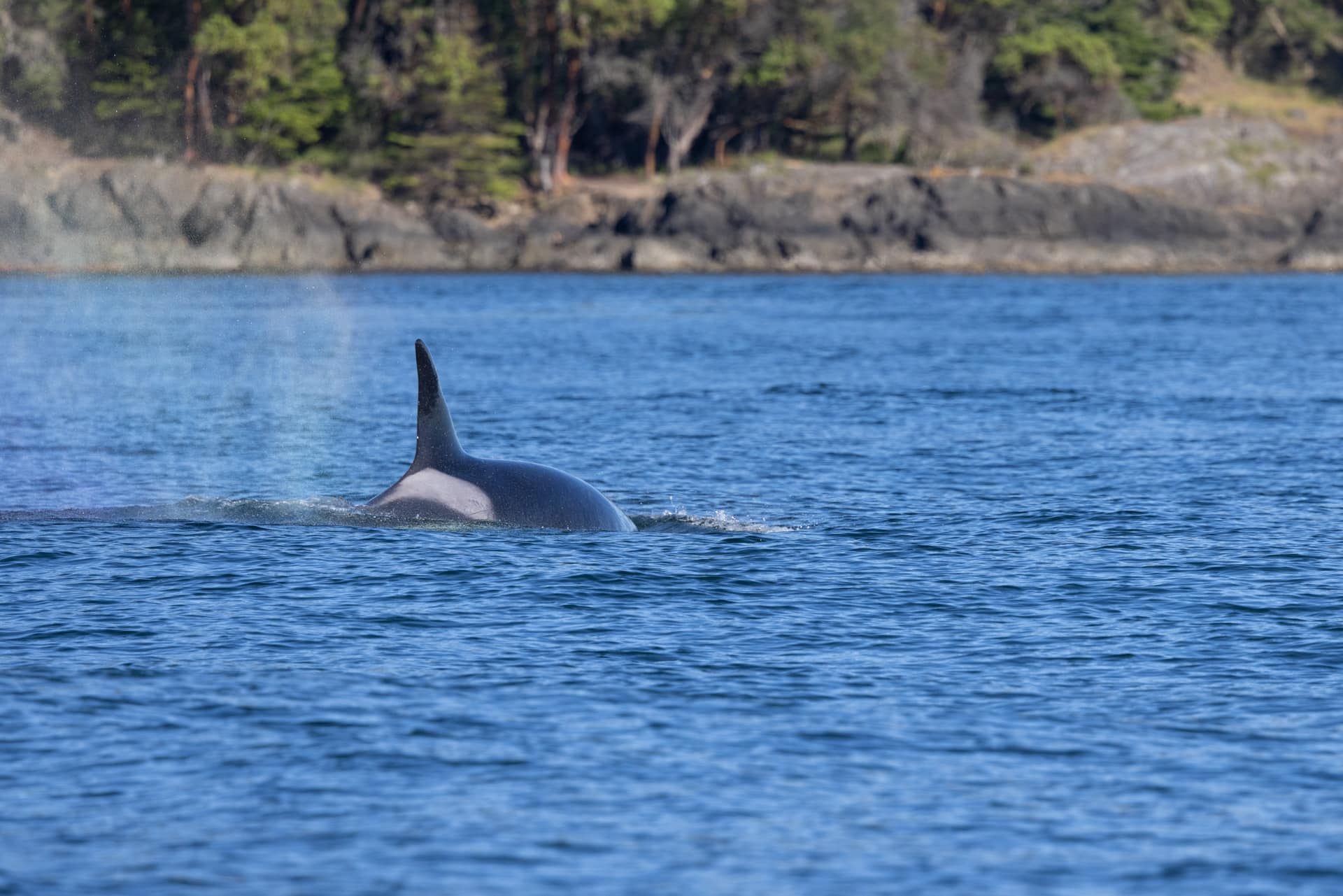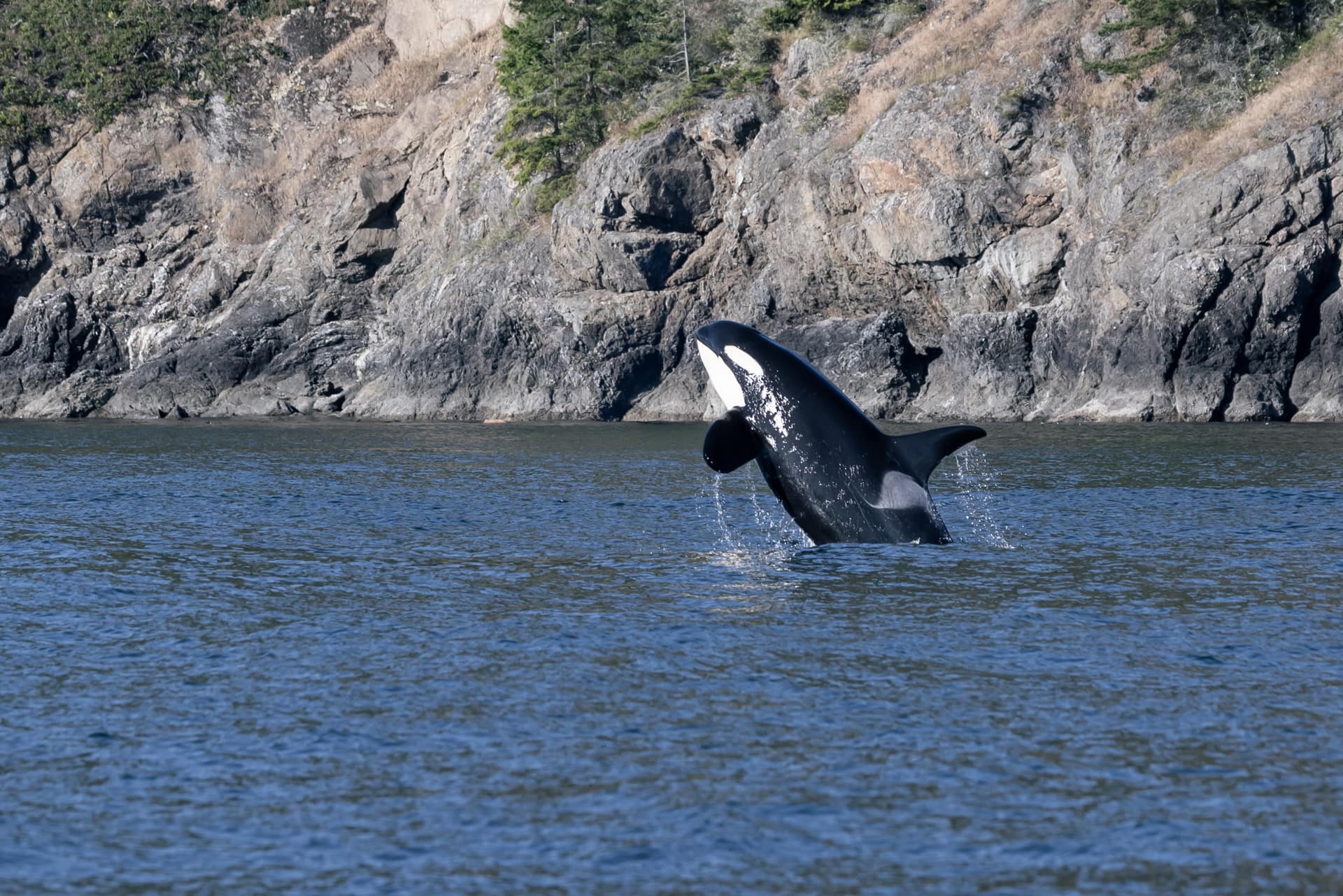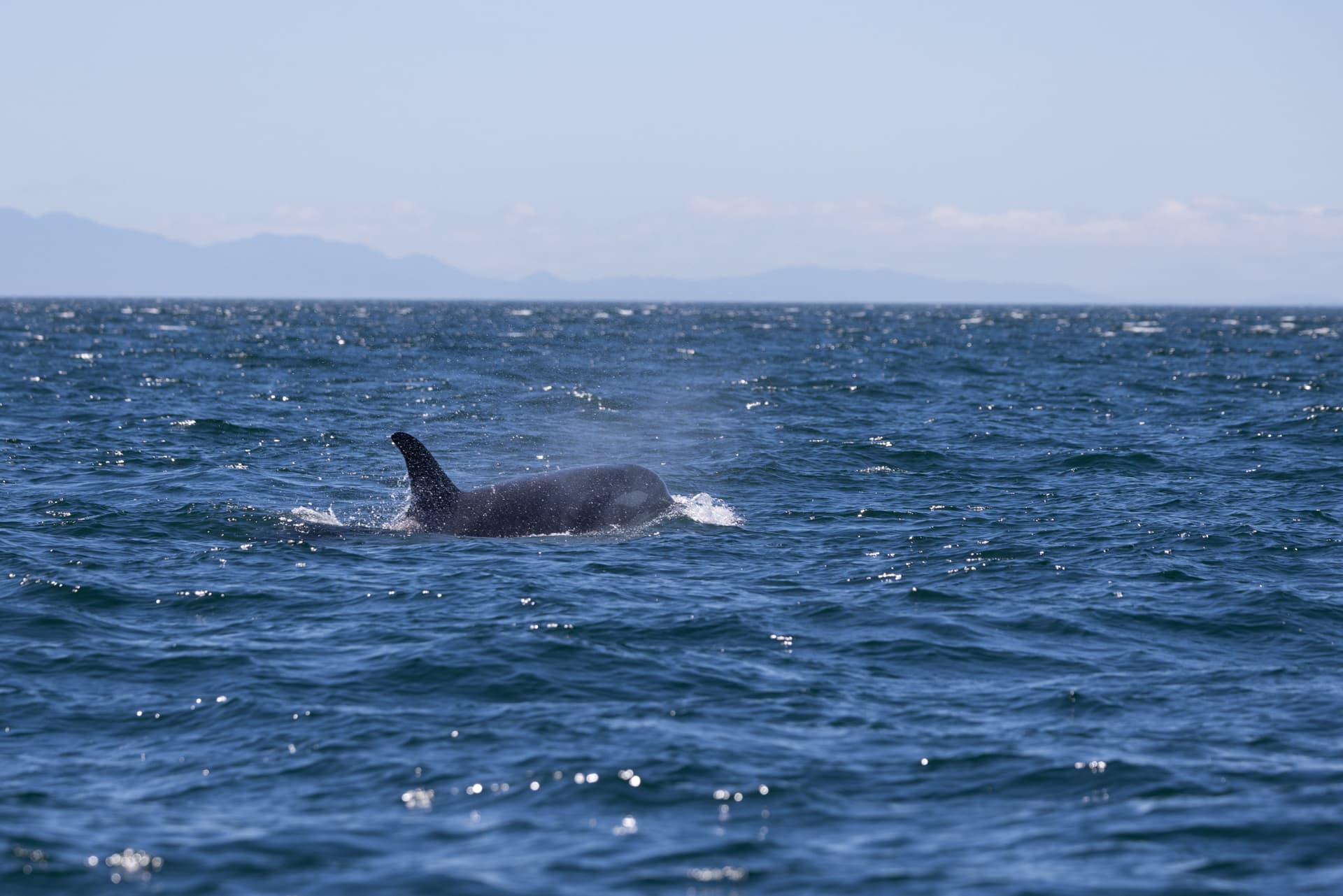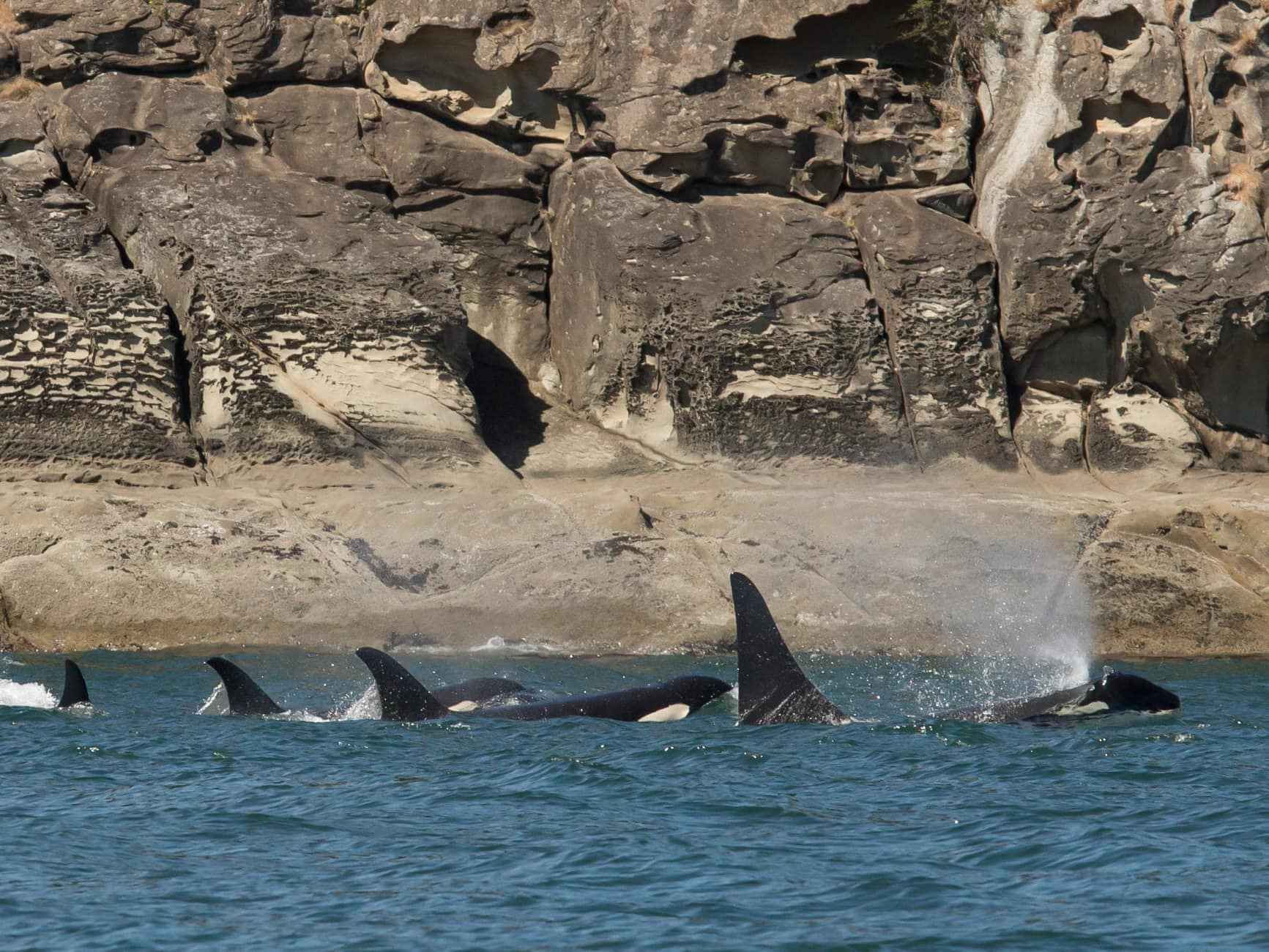
In the midst of a sixth mass extinction, scientists are increasingly concerned about mismatches in the synchronized timing between predators and their prey. When they’re out of step, the consequences can be dramatic. For example, in our warming climate, insects may develop earlier in the spring meaning they’re simply too large for newly hatched chicks.
Today the Southern Resident killer whales spend less time in the Salish Sea than in all prior records. Could this be related to a shift in timing of their Chinook salmon prey? It’s the question posed in a new study by NOAA Fisheries.
Whale sightings have been recorded at the Lime Kiln Point State Park on San Juan Island between May and August since 1984. If you visit, you’ll find a whiteboard showing which pods, if any, have passed the lighthouse each day since May 1. In recent years, this has reflected the ever-decreasing number of “whale days”—that is visits from J, K or L pod. On occasion, almost an entire month has gone by with zero sightings—simply unprecedented in the decades this study has been ongoing.

The tribes’ saying, “no fish, no blackfish” is clearly at play here, whether there are fewer salmon or their arrival is delayed. Ancient wisdom knows that predators follow prey, yet the government is still reluctant to say that the absence or presence of these whales is connected to their primary food source. Little wonder when the guardian of this endangered killer whale population is also the custodian of the nation’s fisheries. Once again, playing this dual management role puts the agency at odds with the findings of its own killer whale scientists, as this could impact the annual fisheries catch allowance if implemented.
This research shows that Fraser River Chinook salmon are in short supply each spring, pushing these endangered whales out to coastal waters in search of alternate food sources. To ensure they find enough salmon, fisheries closures are needed in key feeding areas. The Canadian government enacts this exact same plan, triggered by the first arrival of the Southern Resident killer whales in Canadian Salish Sea waters.
Where is the corresponding plan in US waters?





